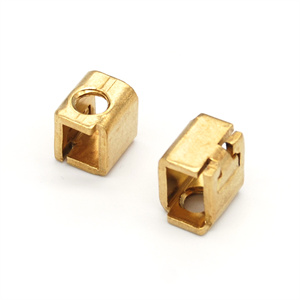Battery contact plates are important components in a battery pack used to connect battery cells and external circuits. Their main function is to provide a channel for current transmission, ensuring that each battery cell in the battery pack can effectively connect to external loads.
Battery contact plates are usually made of materials with excellent conductivity, such as copper, nickel, silver, etc., to reduce resistance and heat loss. Their design and manufacturing need to consider multiple factors such as current density, corrosion resistance, mechanical strength, and reliability.
In a battery pack, Battery Contact Plates are usually in close contact with the battery cells to ensure smooth current transmission. To achieve this goal, the contact piece is usually designed to match the shape of the battery unit and is secured with appropriate fastening methods such as springs, screws, etc. to maintain a stable connection.
In addition, Battery Contact Plates also need to have the ability to resist environmental factors such as corrosion and oxidation to ensure long-term stable performance. In some applications, the contact piece also needs to have a certain thermal conductivity to help dissipate heat and reduce the operating temperature of the battery pack.
Overall, Battery Contact Plates are an indispensable component in battery packs and play an important role in ensuring the performance and reliability of the battery pack.
Brass terminal clamp is an electrical connection device mainly used for conductor connection in circuit to ensure smooth current transmission. The Brass Terminal Clamp is a terminal clamp made of brass and provides electrical connections by clamping conductors. This connector has excellent conductivity, corrosion resistance and mechanical strength, which can ensure the safety and reliability of circuit connection. It is commonly used in low-voltage electrical systems, such as switchboards, control panels, motor control centers, etc.
1、 Characteristics and advantages
Good conductivity: Brass materials have good conductivity, which can reduce resistance and energy loss and ensure smooth current transmission.
Strong corrosion resistance: Brass has strong resistance to various environmental factors, which can extend the service life and reduce poor contact or short circuit caused by corrosion.
High mechanical strength: the brass terminal clamp is reasonably designed and compact in structure, which can bear certain mechanical stress and ensure stable connection under severe environment such as vibration or impact.
Safety and reliability: The brass terminal clamp is used to connect the conductor by clamping, which can ensure firm and reliable connection and reduce the potential safety hazards caused by poor contact or looseness.
Easy to install and maintain: the brass terminal clamp is simple in design, easy to install, easy to remove and check, convenient for circuit maintenance and overhaul.
2、 Scope of application
Brass Terminal Clamp is widely used in various low-voltage electrical systems, including but not limited to:
Power distribution system for residential and commercial buildings.
Industrial automation control system.
Electrical connection of machine equipment and motors.
Electrical system of new energy vehicles (such as battery pack, motor controller, etc.).
3、 Application Scenario:
In the power transmission and distribution system, it is used to connect wires and bus bars to ensure power transmission.
In the manufacture of electrical equipment, it is used as the component of internal circuit connection, such as transformer, switch cabinet, etc.
In the automotive electrical system, connect the battery and various electrical components.
In the power control cabinet of a plant, the Brass Terminal Clamp is firmly connected with various wires to ensure normal operation of the equipment; In the engine compartment of a vehicle, it closely connects the positive and negative poles of the battery with the vehicle circuit to provide a stable power supply for the electronic system of the vehicle.
